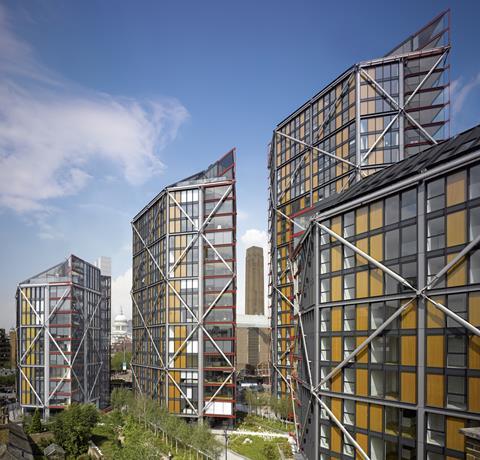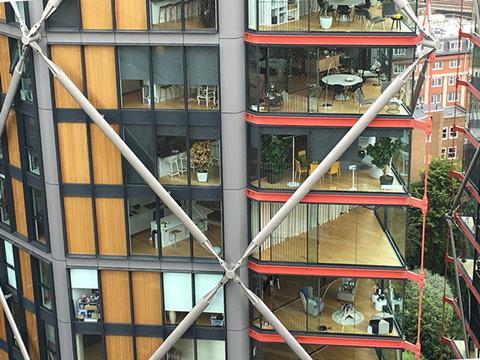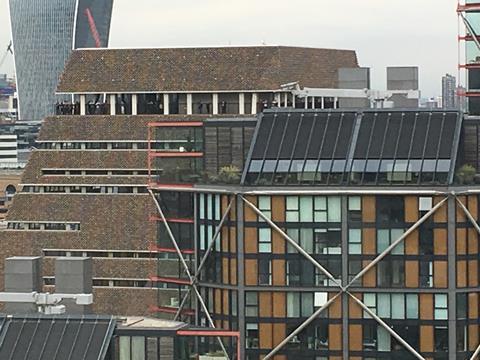Ruling overturns earlier decisions on nuisance caused by Herzog & de Meuron-designed viewing gallery
Residents of RSHP’s Neo Bankside flats in Southwark have triumphed in their legal challenge over visitors to the Tate Modern gallery’s Herzog & de Meuron-designed extension “snooping” into their high-end homes.
In a ruling handed down today, the Supreme Court said a 2019 High Court decision in the case was wrong and that the Court of Appeal had been wrong to uphold it the following year.
Residents of the Neo Bankside flats – which cost from £2m-£19m - had complained that visitors to the 10th floor viewing platform of Tate Modern’s Blavatnik Building extension, previously known as Switch House, looked into their homes with binoculars and took pictures of them.
Neo Bankside completed in 2012, four years before the Tate Modern extension opened to the public.
Visitor numbers to the viewing gallery are in the region of 500,000-600,000 a year. Residents said they wanted the Tate Board of Trustees to either close off part of the viewing area, or screen it to give greater privacy for their homes, which have floor-to-ceiling windows with views of the River Thames.
In its 2020 decision, the Court of Appeal said there was no precedent for overlooking by neighbours to constitute a “nuisance”.
Overturning the previous decisions, the Supreme Court said that inviting members of the public to admire the view from a viewing platform was not a “common and ordinary” use of the Tate’s land, even in the context of operating an art museum in a built-up area of south London.
It said the Tate was liable to the claimants for the nuisance caused, and sent the case back to the High Court for the remedy to be decided.
Natasha Rees, senior partner at law firm Forsters, is the lead lawyer advising the Neo Bankside claimants.
She said the residents were “both pleased and relieved” that the Supreme Court had found in their favour, six years after their claim began.

“Lord Leggatt, giving the majority judgment, recognised how oppressive it can be to live ‘under constant observation from the Tate’s viewing gallery for much of the day, every day of the week… much like being on display in a zoo’,” she said.
“Our clients now look forward to working with the Tate as valued neighbours to find a practical solution which protects all of their interests.”
A spokesperson for Tate Modern thanked the Supreme Court for its “careful consideration” of the matter, but declined to comment further as the case has been referred back to the High Court and is ongoing.


















1 Readers' comment